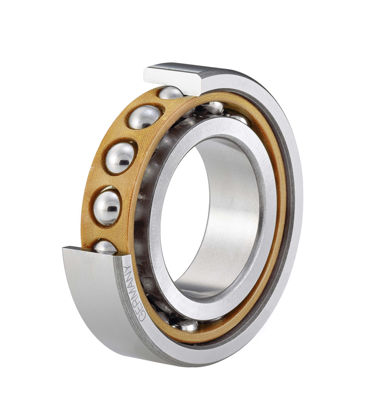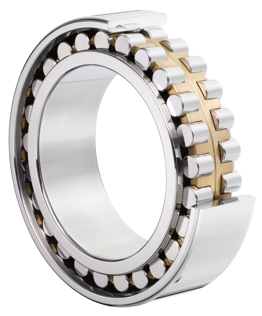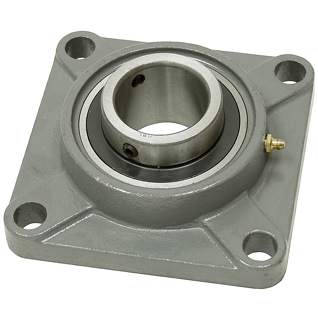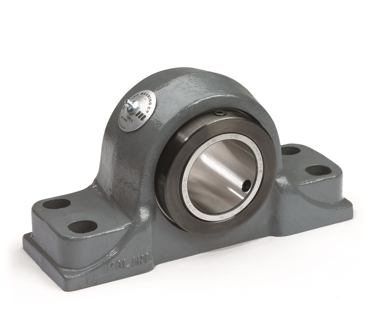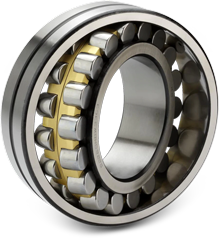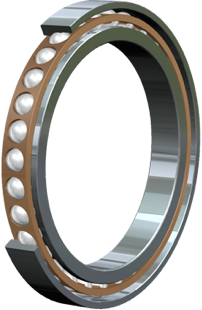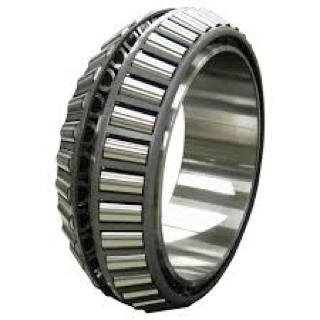Carrier bearings lubrication and problems
Carrier bearing is an important part of the drive shaft as it connects different pieces of the shaft with the main structure. The main purpose of a carrier bearing is to hold drive shaft and it should be immune to vibration and harsh driving conditions to work properly and safely. There are some situations where the carrier bearing can get damaged, for example excessive about of load as well as malfunctioned drive shaft that can put excessive amount of torque on it. Drive shaft is the part of vehicle that transfers power to the wheels from the power producing unit.
Usually carrier bearings come in two components that hold drive shaft firmly when it delivers power from transmission to wheels even at varying angles. Another purpose of drive shaft is to provide flexibility to the vehicle so it can manage itself according to the variations caused by different driving conditions. It is important to know that not all of the vehicles come with drive shafts as some vehicles have internal system of gears that transfer power to the wheels individually.
SKF is a well known manufacturer of carrier bearing replacements as the company is specialized in bearings with high stability as well as reliability. All the components in gearbox must be properly positioned in order to reduce noise, vibration and energy loss. To achieve this kind of system that also does deliver high performance, SKF designs high quality carrier bearing replacements. Usually the whole apparatus consists to two bearings that could be roller bearings or ball bearings with deep grooves. These bearings are then attached with the carrier. The shape of carrier is designed according to the specific requirements and application.
Deep grooves ball bearings are directly connected with the gearbox that eliminates the need to outer ring seat, although this is not the only benefit of this apparatus. This system has significantly reduced overall cost as well as high operating efficiency. Because of the proper positioning of the components, it produces lesser ball bearing noise and vibration. SKF adopts latest technologies to keep the designs compact and light weight as these characteristics can put direct negative effects on the overall performance of the vehicle. One of the greatest advantages of this system is its simplified assembling process that makes the installation easy.
Why carrier bearings fail?
Usually rolling elements like ball bearings and roller bearings are durable and reliable components of any vehicle. These parts sometimes outlive the vehicle itself because of their high quality and durability but sometimes they break down or get damaged. Although this does not happen a lot but when it does it costs a much and obviously the repairing take time. Contrary to popular belief, one small percentage of total carrier bearing replacement failures are because of material or poor quality while a majority of these breakdowns happens because of other factors.
Sometimes carrier bearings fail because of the extreme operating conditions, poor handling or poor installation while sometimes it does happen because of lack of lubrication or some other relevant issues. According to several studies conducted on this kind of failures, the data gathered from them revealed that more than 50% of these failures happen because of improper lubrication, around 25% of the cases report improper mounting as a cause while around 20% of these failures happen because of other causes.
It is important to lubricate anti-friction bearings to prevent any kind of contact between different metallic parts. Because of lack of lubrication rollers, raceways and rings can contact and get damaged. This is not the only purpose of lubrication in a carrier bearing replacement as lubrication also protects different parts from corrosion, heat and reduces noise and vibration. A properly lubricated carrier bearing replacement can reach its maximum service life. Lack of proper lubrication is one cause of lubrication failure while there are many others.
Lubrication failure can happen because of insufficient amount of lubrication used in the apparatus, excessive temperature that can damage the grease or oil and ultimately the carrier bearings, contamination like dirt and water, use of improper lubrication like grease in place of oil and vice versa and over lubrication of bearings. Unlike ball bearings, rolling elements used in carrier bearings need a very thin layer of lubrication between different parts of the bearing. In that case, the oil or grease must be selected based on their ability to keep elements separated.
Lubrication failure can be detected by diagnosing raceways and the rolling elements of carrier bearings. If these elements have excessive wear marks or raceways are discolored then these elements may result in overheating at high speed and they may lead to total failure. Additionally, because a lack of proper lubrication or if the lubrication loses its properties then it may result in direct contact between metallic parts of the apparatus. Although this kind of wear starts at microscopic level but they gradually increases that may lead of even more damage.
How to identify carrier bearing and carrier bearing replacement problems?
There are many different problems that a carrier bearing replacement can have while in many situation it can cause damage to other parts. Some problems are easy to identify while for some you have to have enough knowledge, experience and skills. Luckily some of the most common carrier bearing problems are easier to diagnose and you can hear unusual noise to get the idea which malfunctioned part is causing this. Other than issues associated with a carrier bearing replacement, some axle issues can also be identified by simply hearing unusual sounds vehicles produce with fault parts.
If the vehicle produces clicking sound while cornering or clucking sound while accelerating then it is probably because of worn CV joint. It is important to know that this particular problem is not usually caused by carrier bearings and you should not confuse this low pitched sound with other issues associated with carrier bearings in which they produces heavier sound. If the sound is continuous humming or whirring that increases with the speed gradually then it might be because of worn carrier bearings or pinion bearing.
It is quite simple to identify the actual cause of this issue as pinion bearings and carrier bearing spin at different rates. Pinion bearings spin faster that allows you to see which part is producing the sound. Sometimes loosen pinion bearings cause this sound too. If the vehicle is producing excessive clunking sound while accelerating then you have to make sure whether the sound is coming from the driveline or the axle. Unfortunately there are many parts that can cause this sound but you can simply starts from the easiest part and use the process of elimination to find the faulty one.
This issue could be caused by worn carrier bearings, worn pinion bearings, loose carrier bearing replacements or pinion bearings nut, worn differentials or improper adjustment of any of these parts. If you just have done some work on your vehicle then chances are poor installation is causing this issue. Sometimes the vehicle produces low pitched sound at high speed exclusively, you might not notice any difference or issue at low speed but in this case the faulty parts can damage other components. The same issue can also cause excessive vibration at high speed.
Usually this issue is caused by carrier bearings and the issue must be addressed immediately. If you identify this particular issue at early stage and the only damaged part is carrier bearing then you can get away with that with a carrier bearing replacement, but in most of the cases faulty carrier bearings could damage other parts of the axle with metal shaving. In that case the axle should be rebuild that could be time consuming and costly.
How to select proper lubrication for a carrier bearing replacement?
Not only in a carrier bearing replacement but in all kinds of bearings, lubrication plays an important role in the overall performance of the system as well as its reliability. So, it is essential to select the proper types of bearing lubrication, otherwise carrier bearings can be failed and cause damage to other parts of the vehicle. There are three main things you must keep in mind while selecting lubrication. First, the lubrication must be used in right amount and the right amount of lubrication in carrier bearings depends on the temperature as well as the seals used with the apparatus.
Secondly, the type of lubrication must be right and some most common types are oil and grease. In some cases, solid lubricants are also used but this does not happen in most of the cases. Last but not the least thing you must consider is the quality of lubrication. The lubrication used in a carrier bearing replacement must be clean because contaminations in lubricant can damage the inner parts of the apparatus.
Grease as a lubricant
Grease is a common lubricant used in carrier bearing replacement and it must be used under normal temperature, performance and condition. Grease is a popular choice as it has many advantages over its counterpart, oil. It is easier to use, less expensive and provides better protection against humidity and containments like dirt. There are different types of grease that must be chosen according to the specific application and the environment in which the apparatus will be working. Some of the properties that categorize grease are hardness, water resistance and stability.
In fact grease is suspended oil in a base and when this base or carrier gets extreme temperature or moisture, it turns into foam. A poor quality base used in grease can cause this kind of exposure that may lead to something dangerous. Over lubrication is a serious issue, particular in high performance machines and apparatuses. At high speed, different components and parts push the excessive amount of grease out of there way that rises the temperature. In that condition, adding more grease simply worsens the station as the excessive amount of grease is the cause of problem in the first place.
There are many different factors that determine the time frame of next lubrication of carrier bearings. Some of these factors are size of bearings, type, speed, type of grease and the operating temperature. Ball bearings use corrosion protection as well as the housing must be full of grease all the time as these bearings work at slow speeds.
Oil as a lubricant
Ball bearing oil lubrication is a suitable choice in those applications and situations where it is not possible to use grease as a lubricant. There are some certain situations that are not compatible with grease for example speed and operating conditions. Oil is also used to match other requirements of the application regarding seals. There are two types of systems used where oil lubrication is applied. Oil bath system is used in low speed applications while oil circulation system is used in application where temperature gets high because of high speed.
At high performance, the oil penetrates in the internal parts of the apparatus to absorb heat and the oil injection system ensures that every component that needs oil gets it. Additionally, the oil injection speed is set carefully as it must be high enough for successful penetration. The time frame of oil change depends on several factors including the quality and operating environment. If the machine operates in environment where contamination is possible then the oil must be replaced frequently.
Even in ideal operating environment, carrier bearing replacement seals can leak that ultimately leads to either contaminations or worn components because of lacks of lubrication. A leaking seal is not necessarily an indicator of failed seal as other factors like amount of oil or grease can also cause this issue.



